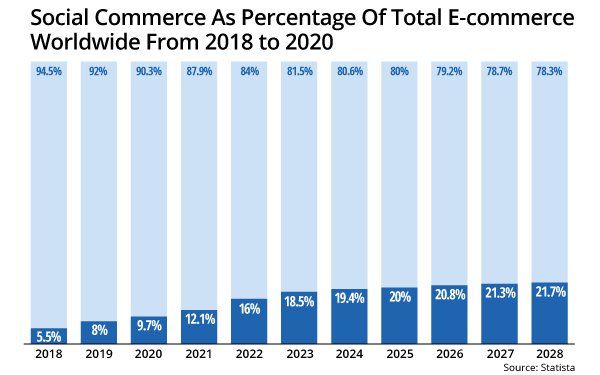
With social commerce expected to encompass $2.9 trillion dollars in transactions by next year, research
shows that 30% of consumer brands do not have a social commerce strategy, despite social platforms like Instagram and TikTok making up a growing portion of the customer purchasing journey.
The
Samy Alliance agency's new trends report, which analyzed insights from 70 surveys of leading global brands in the context of social media, influencer marketing and consumer behavior, predicts that
social media will deepen its influence as a direct sales channel in 2025.
“The fact that nearly a third of consumer brands admit to lack a social commerce strategy, when you can see the growth of platforms such as TikTok Shop, is astounding,” says Patricia
Aragón, Samy Alliance's global director of ecommerce emerging solutions & innovation.
advertisement
advertisement
According to Samy's report, only a quarter of brands engage in “frequent, proactive
interactions” with their online community on social media, which the agency highlights as a major component to selling products on social platforms.
“Brands that sleep on community
interactions are missing out on algorithm-boosting engagement, customer feedback, brand loyalty, sales, and product awareness,”Aragón says.
“When used effectively, online
community management can increase brand loyalty and grow authentic connections with followers, making it a vital tool in a brand's marketing toolbox,” Aragón adds. “Community
managers act as brand ambassadors, engaging in discussions with followers, connecting with customers, and creating shareable content.”
Almost three-quarters of those who
responded to Samy's survey reported that the most critical marketing skill for 2025 is the ability to adapt storytelling effectively to different channels.
Even as AI continues to transform
marketing, Samy's report suggests that social commerce's estimated success
demands that brands further humanize their approach in order to connect meaningfully with consumers.
“People want to buy from people,” says Joe Moring, social media director at
Samy UK.
“If 40% of your commerce content strategy doesn't feature real people, preferably UGC, then you're doing it wrong.”
“Social sellers that recommend products
in pro of the brands like influencers, creators, experts, and even consumers are the backbone to ensure a humanized and authentic social commerce experience,” adds Aragón.
For
brands that reported having a dedicated social media strategy, Instagram was their first choice. The Meta-owned platform is employed by 40% of brands surveyed by Samy, ranking ahead of 34% of brands
that use their own e-commerce platforms. One in four plan to devote at least a quarter of their annual marketing budget to the platform in 2025.
In addition, while 86% of marketers say Google
is still the number one place where customers search for their brand online, Instagram and TikTok are closing in fast at 70% and 44%, respectively.
Nearly half of brands surveyed also said
they prefer leveraging social platforms like TikTok and Instagram with commerce features already built in.
“With platforms like TikTok, Instagram, and even WhatsApp integrating more
shopping features, influencers will naturally evolve to be key players in guiding audiences from discovery to purchase,” says Francisco Morgado, Samy’s Global Head of Influencer Marketing.
“For brands, this means an opportunity to leverage influencers not just for awareness, but also for measurable sales outcomes.”
As more brands attempt to prioritize making sales on
social media platforms, short-form video content is likely to become a key player in their social commerce strategy, with 69% and 66% of respondents believing that Instagram Reels and TikTok video
will gain further prominence over the coming year, respectively.
“We’re seeing more and more focus on ‘shoppertainment’,” says Aragón,
adding that “bite-sized clips captivate audiences with quick, impactful bursts of joy and entertainment, requiring minimal time commitment.”